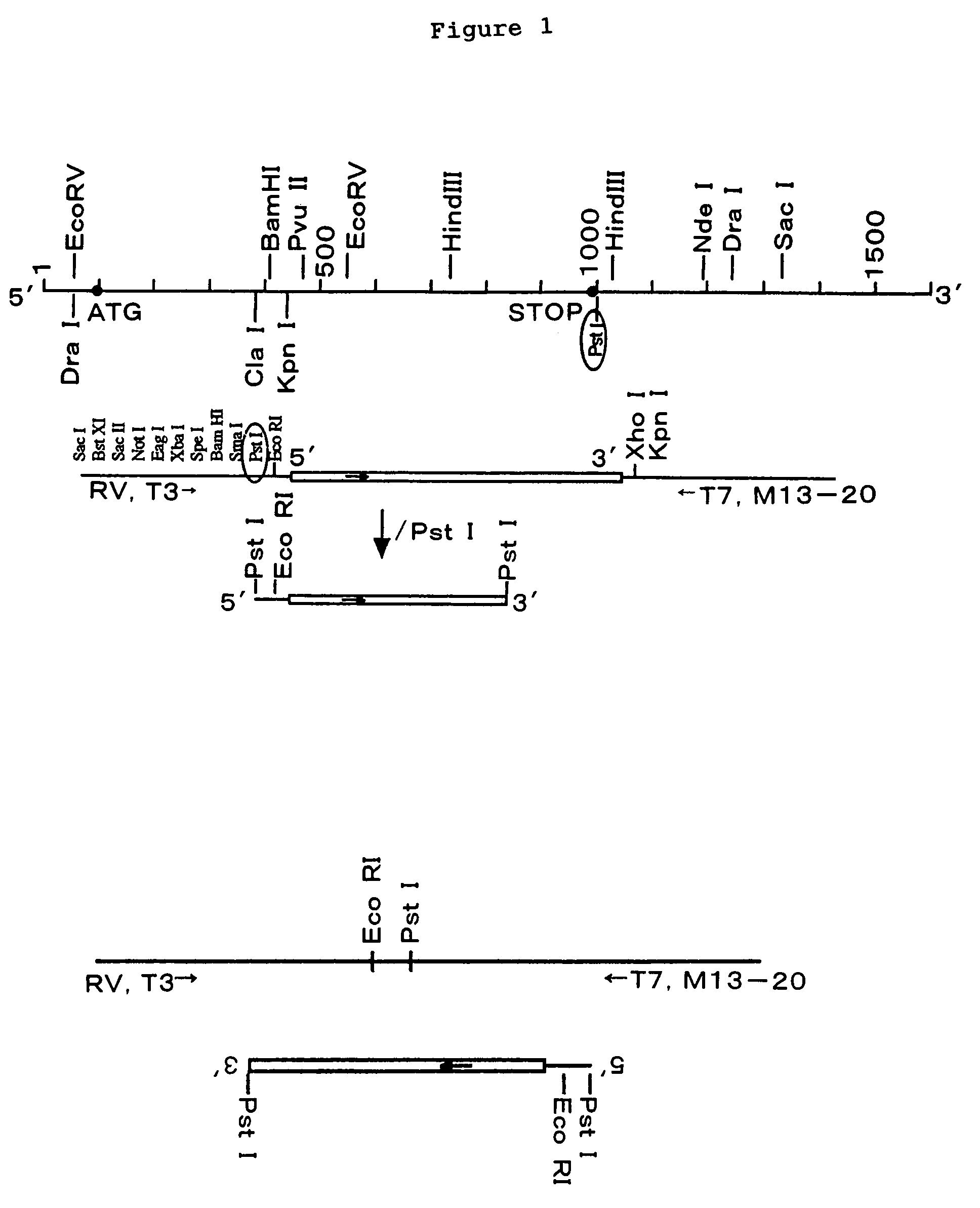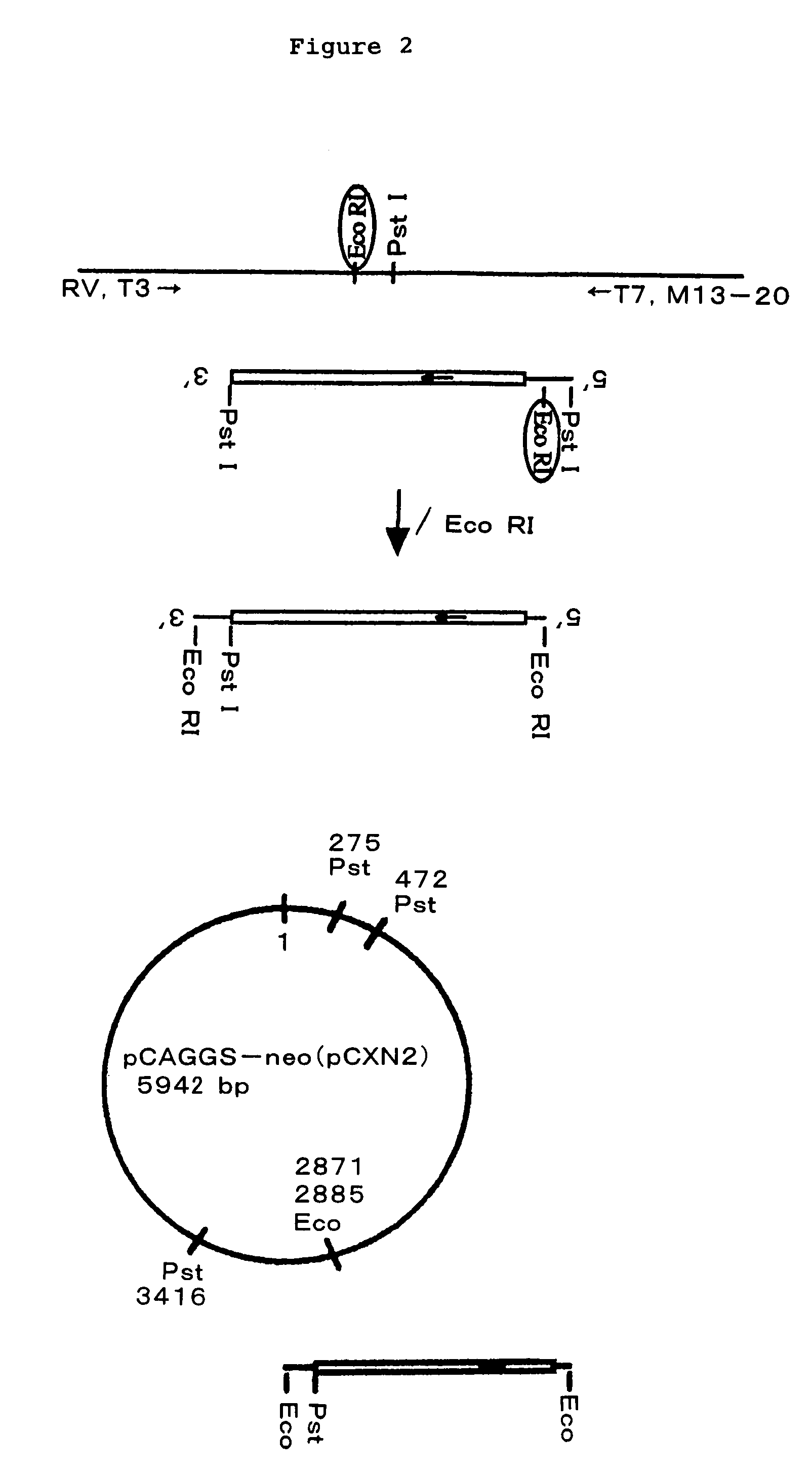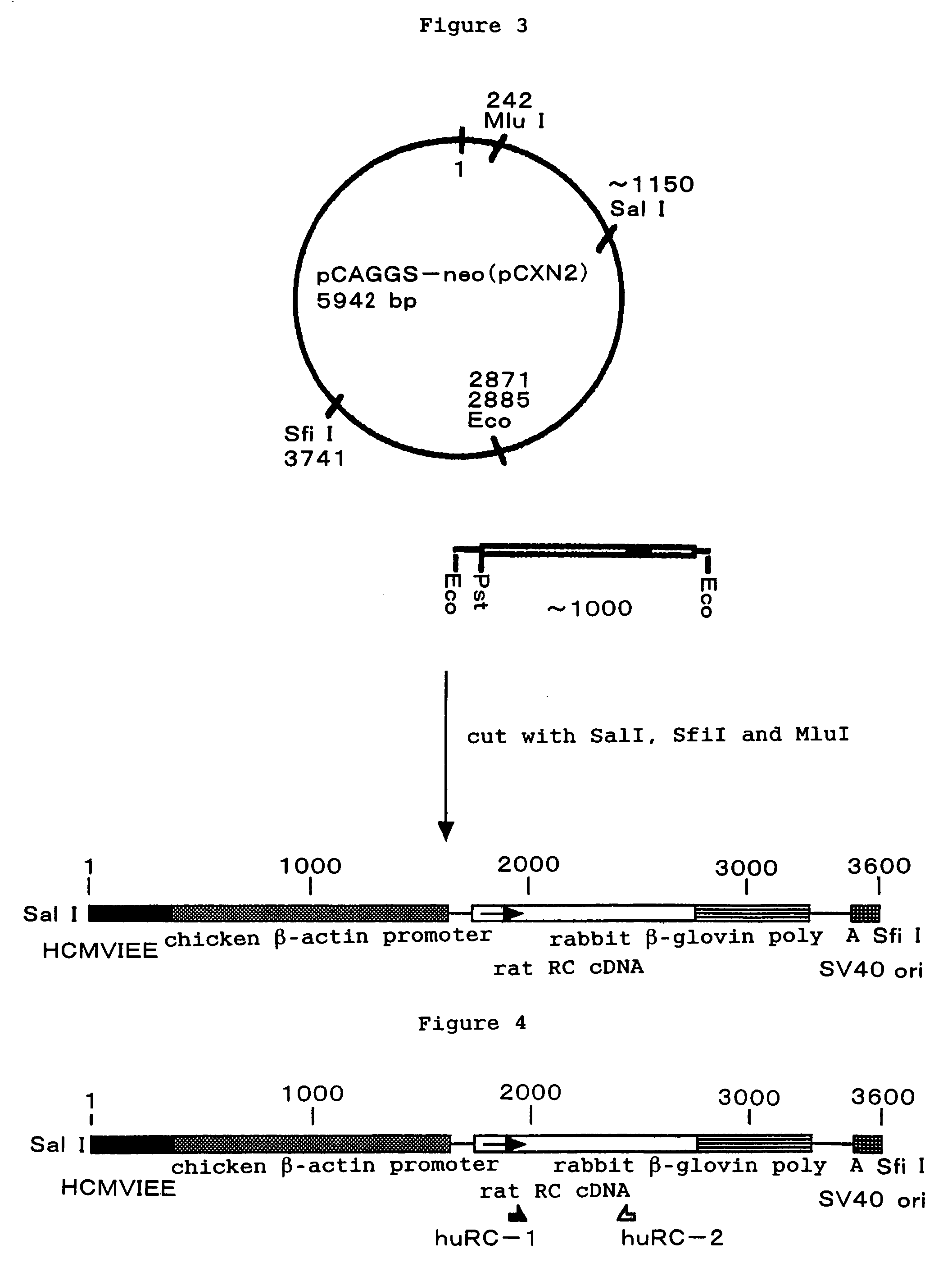Model animal with overexpression of regucalcin
a model animal and overexpression technology, applied in the field of regucalcin gene introduction transgenic nonhuman animals, can solve the problems of causing physiological abnormalities, and serious social problems, and achieve the effect of preventing bone pathology and increasing the cost of research
- Summary
- Abstract
- Description
- Claims
- Application Information
AI Technical Summary
Benefits of technology
Problems solved by technology
Method used
Image
Examples
example 1
Preparation of Rat RC cDNA
(Preparation of RNA)
[0087]Liver was extracted from a male Wistar rat (3 weeks old), and homogenized with guanidine-isothiocyanate solution (4M guanidium thiocyanate, 25 mM sodium citrate (pH 7.0), 0.5% sarcosyl, 0.1 M 2-mercaptoethanol and 2 M sodium acetate). This mixture was extracted with phenol-chloroform-isoamyl alcohol mixed solution, and centrifuged at 4° C., 10,000×g for 20 minutes. Isopropanol was added to the aqueous layer, left at −20° C. to precipitate RNA. The precipitate was recovered, and dissolved in 0.5% sodium dodecyl sulfate treated with diethylpyrocarbonate. The resultant was put in an olygo (dT) cellulose column to purify poly (A)+RNA.
(Preparation of cDNA Library)
[0088]50 units of Moloney-Murine Leukemia virus reverse transcriptase and oligo (dT) 18 primer linker were added to purified poly (A)+RNA (5 μg), to synthethize a single-strand cDNA. E. coli RNase H and DNA polymerase I were added to said synthethized single-strand cDNA to synt...
example 2
Generation of Transgenic Rat
(Construction of Transgene)
[0092]From the plasmid containing rat regucalcin full length cDNA obtained in Example 1, RC-900 (glycerol stock; RC-F), vector pBluescript SK (−), DNA fragment containing all ORF was resected with PstI (FIG. 1A). Said PstI fragment resected was integrated into PstI site of pBluescript II KS (+) (FIG. 1B). Then, EcoRI fragment obtained by resecting with EcoRI (FIG. 2A) was introduced into EcoRI site of the expression vector pCXN2 (Clontech) (Gene 108, 193-199, 1991) (FIG. 2B) to prepare rat regucalcin expression vector RC / pCXN2. Said RC / pCXN2 was resected with SalI, SfiI and MluI to obtain a linealized 3.6 kbp fragment (FIG. 3).
(Preparation of Transgenic Rats)
[0093]The microinjection to rat prenuclear fertilized egg of 3.6 kbp DNA fragment solution linealized as described above was conducted as follows. A 4-weeks-old Sprague-Dawley (SD) female rat was raised in a light-dark cycle for 12 hours (light hours 4:00-16:00), at a temper...
example 3
Ability to Suppress Weight Gain
[0095]Among strains of transgenic rats (heterozygote) obtained in Example 2, the strains which the amount of regucalcin expressed in tail tissue was largest were intercrossed to generate transgenic rat (homozygote). Furthermore, it was identified to be homozygote by determining the integration of transgene to genomic DNA extracted from rat tail tissue by PCR, and the integrated amount detected was more than 2 times of the cDNA amount of heterozygote. The ability of suppressing weight gain was examined by using said homozygote transgenic mouse. The average level of body weight of 3-4 weeks old wild-type SD rats and transgenic rats (homozygote) for 8 rats each are shown in Table 1. Student's t test, P<0.01, it is shown by mean value±S.E.M. so a significant difference is considered. It was verified that the weight gain is suppressed by the overexpression of regucalcin gene.
[0096]
TABLE 1body weight (g)wild-type88.5 ± 3.8transgenic69.5 ± 2.4*
PUM
| Property | Measurement | Unit |
|---|---|---|
| Length | aaaaa | aaaaa |
| Thickness | aaaaa | aaaaa |
| Density | aaaaa | aaaaa |
Abstract
Description
Claims
Application Information
 Login to View More
Login to View More - R&D
- Intellectual Property
- Life Sciences
- Materials
- Tech Scout
- Unparalleled Data Quality
- Higher Quality Content
- 60% Fewer Hallucinations
Browse by: Latest US Patents, China's latest patents, Technical Efficacy Thesaurus, Application Domain, Technology Topic, Popular Technical Reports.
© 2025 PatSnap. All rights reserved.Legal|Privacy policy|Modern Slavery Act Transparency Statement|Sitemap|About US| Contact US: help@patsnap.com



